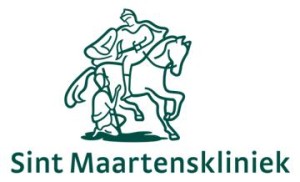Towards a regional approach of osteoarthritis: Osteoarthritis treatment, in primary and secondary care
Supple joints, less pain, better sleep. With osteoarthritis (OA) under control these effects should be experienced. In Nijmegen three hospitals, numerous GPs, physiotherapists and patient representatives have joined forces to follow the same stepwise approach for OA: first offer effective conservative treatment options (pain medication, exercise, weight reduction, and referral to physiotherapist or dietician when indicated); only thereafter consideration of hip- or knee replacement is warranted. To support this stepwise approach and to offer concise and consistent information OA patients follow a community-based two-evening educational course jointly developed and held by caregivers from both primary and secondary care.
Patients suffering from OA can experience pain and stiffness of joints and muscles. In time, a solution can be knee or hip replacement. In practice this invasive procedure frequently yields unsatisfying results, possibly due to too early referral. More conservative therapies such as pain treatment and physiotherapy can offer alleviation during primary stages of the condition.
Current practice for OA patients shows that:
* Patients have little knowledge of and make suboptimal use of conservative therapy
* Patients are regularly referred to secondary care in a too early stage of OA
* Patients often opt for a joint replacement in an early stage of OA
* 1 in 5 patients does not experience improvement in daily functioning after replacement
We therefore concluded that there is potential to improve the OA care pathway to realize more efficient and fitting care. During the project ‘Clear and consistent information on OA treatment, in primary and secondary care’ we developed and implemented community-based educational courses for patients in early stages of OA. Subjects discussed were based on an inventory of questions asked frequently by patients to various caregivers, such as course of the disease, treatment options, self-management, expectations, impact and consequences of a joint replacement and complications leading therefrom. We jointly formulated evidence-based, and if not available, consensus-based answers to those questions to establish consistency of information. Goal is to encourage patients to follow conservative treatments and not to opt for a joint replacement if not yet necessary. This should lead to more fitting treatment, a reduction in the number of referrals to secondary care and a reduction in the number of joint replacements. In 2015 five courses have been held, reaching 74 number of patients and partners, and in 2016 six more courses will be held, to reach 200 patients and partners in total. The Nijmegen region serves as a pilot for this initiative. Annually there are approximately 89,000 new hip or knee OA patients per year in The Netherlands.
This project is a collaboration between numerous general practitioners, physiotherapists and the three hospitals in the region (Nijmegen) and the insurance company prevalent in the region. Thanks to these joint forces the information courses were determined, developed and are held in joint hands. As a result the patient hears the same story from caregivers from various disciplines from both primary and secondary care. By measuring customer satisfaction, consumption of healthcare and self-management skills, the results of the project will be evaluated.


